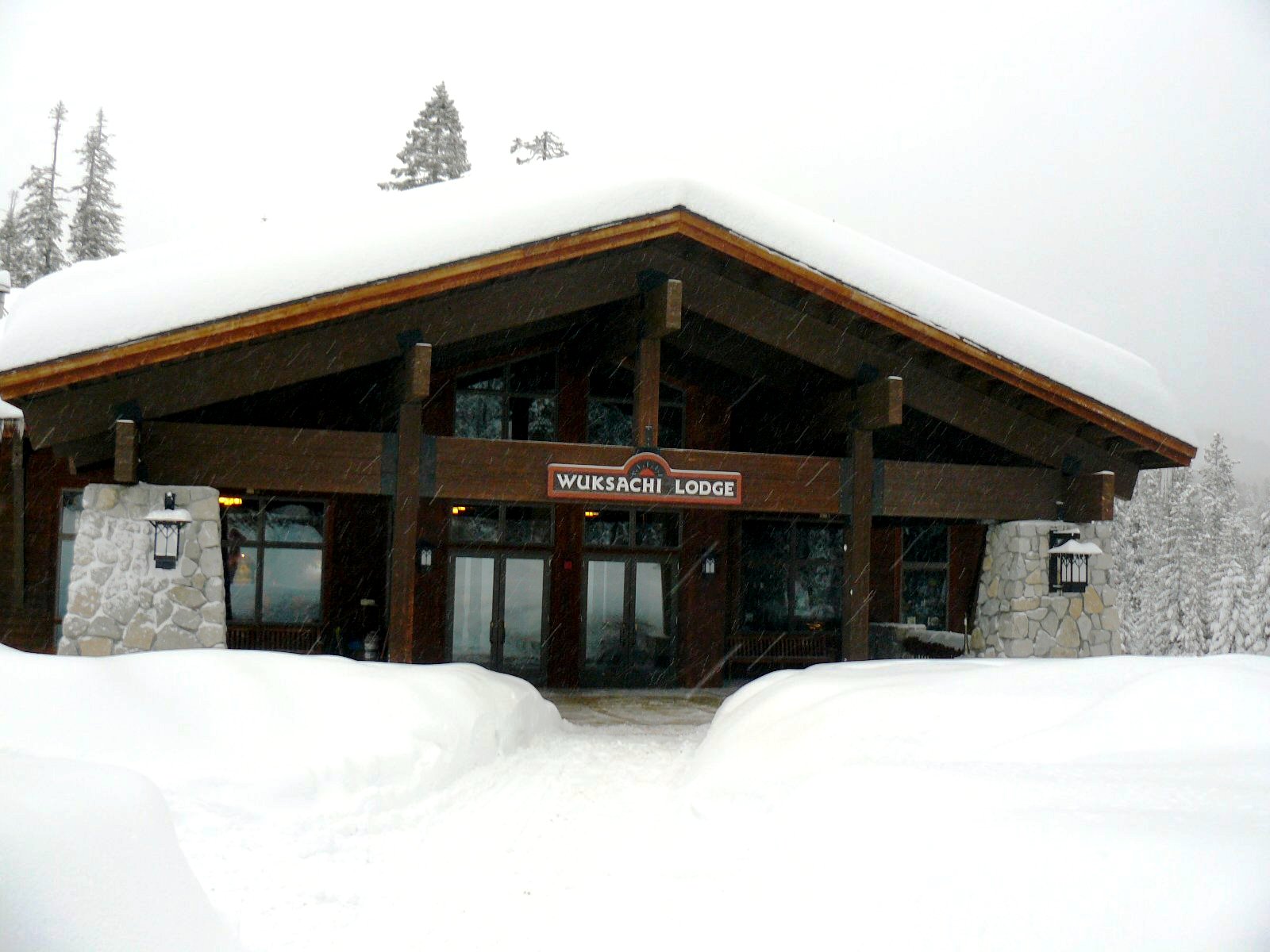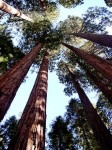
By Mary Webb
Photos by: Barbara Thomas and Wuksachi Lodge
Wuksachi Lodge; named from the Wuksachi band of Western Monache Native Americans who seasonally used the area, prior to Euro-American settlement. While these Native Americans were historically known to live in conical huts, covered with slabs of bark, the Wuksachi Lodge has 102 spacious guest rooms.
Located in the Sequoia National Forest, the spirit of the Wuksachi still lives in this peaceful place. Built in 1999, Wuksachi Lodge reflects the pristine forest and abundance of animals that attracted the Wuksachi to this region. You can see this theme echo throughout the architecture, activities and attentive staff who serve their guests.
Traveling to Wuksachi Lodge, we stopped at the park entrance station where we were met by a friendly park ranger, checking in at 4000 feet in elevation. Here is where $20 parking passes are obtained, lasting for a one week stay in the Sequoia National Forest. Yearly passes may be purchased as well to this and other nearby park locations. Location maps and areas of interest are also provided to forest guests at this juncture. Winter weather conditions may affect the ability to travel to the lodge, it is recommended that visitors check the road and weather conditions before their departure by calling (559) 565-3341.
The winding road leading to the 7,200 foot elevation at Wuksachi Lodge is a 25 mile ascent. As we made our way up, the
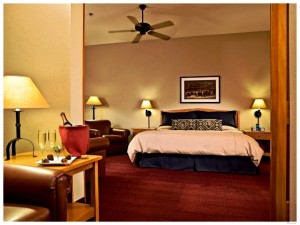
temperatures went down; however, intermittent Sequoias dotting the road side warmed our hearts with their greatness. Caution needs to be taken while heading to the lodge, as bear and deer commonly frequent the roadside. We spotted a family of deer on the outskirts of the pavement, assessing our SUV in the rural terrain. As we neared the 7,000 mark in elevation, we were in awe of the breathtaking views below us. A sea of clouds shimmered at the base of the mountains, reminiscent of the Pacific Ocean near our home town we were leaving for two full days.
Arriving to the Wuksachi Lodge in the evening was a welcoming experience! Upon pulling up to the entrance of the main lodge, soft amber lights set the building aglow against the surrounding snow, creating a beacon of light. The Christmas tree was by no means any competition, drawing itself to the foyer of the lodge. Upon check in, our path seemed to be lit by the explosive array of stars in the sky! We felt we would be scooped up at any minute by the big dipper, and become part of the constellations.
The Superior room we stayed in is located about 200 yards from the main lodge area. The three affiliated lodging units where the rooms are situated are the Sequoia Lodge, Silliman Lodge and Stewart Lodge. We had the opportunity to stay in the Silliman lodge building, named after the Silliman peak to the north east.

There are luggage carts available from the parking lot to the lodges; really liked the “snow tires” that were on the carts to assist our way up the snowy path to the room. Be mindful not to have any food items left in the car. There are plenty of black bears around the area who would love to partake in a midnight snack in your car!
After a long snowy drive, we melted in our Silliman Lodge room. The Superior room allowed us to set up a cheese platter and night cap in the nook off to the side. Panels located at the onset are able to be shut to provide a little more privacy if desired. Wuksachi’s 10 year anniversary in 2009 gave way to renovation as new bedding, carpet and furniture were administered. The temperature in the room was set to “toasty,” warming us for a good night’s sleep in preparation for the next day’s activities.
In the morning, blue skies, pink undertones and 70 degree weather presented itself to us on our way to meet our snowshoe guide, Carolyn Pistilli. Pistilli has been the camp manager for many years at the lodge! She took us for an intermediate snowshoeing excursion through the Sequoias. Don’t worry if you don’t have your own snowshoes while visiting the park, Wuksachi lodge has them available for rent for less than $20 a day.
Giant sequoias live at a much higher altitude, mostly between a 5,000 and 7,000 foot elevation level. After securing our snow

shoes, we set out for General Sherman, the largest known tree in the world!
There are various levels of snowshoeing in the area. Children may snowshoe as well, and Wuksachi Lodge is able to provide them with snowshoeing gear. The referenced map indicates a few of the non-exhaustive possibilities for snowshoeing adventures. We chose to travel the Crescent Trail. Each trail in the Sequoia National forest is clearly marked on the visitor’s map, and it is very important to be aware of these markers while traversing so you don’t become lost.
While there were several large creeks along our snowshoeing trek, we did not witness any Sequoias along the creek beds, these great trees do not take kindly to water. The Sequoias have a shallow and wide spreading root system. They only root to 12- to 14-feet deep even at maturity. A mature Sequoia’s roots can occupy more than one acre of earth!
Our guide Carolyn Pistilli, demonstrated a sincere love for the region and extensive knowledge were a powerful combination! The air was still but our hearts were eager as we witnessed miracle upon miracle of Mother Nature.
The sugar pines were sweet, especially when thrown against the Sequoias! We had a fun time hearing the only sound of the forest of these little gems thrust against the great trees. No need to be concerned, as the Great Sequoias are made of a “sponge-like” bark that rejects any real damage to their being. As a matter of fact; at the turn of century, loggers tried to use Sequoias to build their homes, but the wood was too soft. The wood would shatter when split, so early settlers only used the wood for shingles and shakes.

Marching our way to meet the General, we discovered such beauty along the way; through Stand alone beauty as well as contrast.
Sequoias do not develop Moss on their exterior, possibly because of the tannins that are inherent in the bark. The tannins are also responsible for warding off wildfire, as is evident among several of the burned trees.
The General Sherman tree stands at a height of 275 feet! Formerly known as the Carl Marx tree, General Sherman is about 2,300 to 2,700 years old. It was named after General William Tecumseh Sherman, American Civil War leader, by naturalist James Wolverton in 1879. General Sherman attracts visitors from all around, calling attention to its majestic features. Perspectives were evident in many aspects, particularly though investigation of the pine cone seeds. Our guide Carolyn informed us that these small pine cones, while seemingly insignificant, hold the potential to becoming a great Sequoia.
“No one knows the mysteries of life or its ultimate meaning,
but for those who are willing
to believe in their dreams and in themselves,
life is a precious gift in which anything is possible.” — Dena DiIaconi
As with any measure of great success, something must be implemented to produce growth. In the case of the Great Sequoia, these
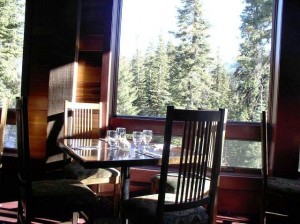
events are the Douglas squirrel and wildfires. As the Douglas squirrel seeks an afternoon snack, it unwittingly opens a door to the forest’s future. The fleshy green scales of the young cones are a major food source for the squirrel. As squirrels eat the scales of the cone throughout the year, Sequoia seeds are released into the soil. Various wildfires that develop in the summer months of the National forest also provide an opportunity for these small cones to crack and disperse seed along the forest floor. We heard these squirrels laughing amongst the black capped Chickadee birds; what fun they have implementing Mother Nature’s inceptions.
Making our way along the trail we came upon the “House,” a group of trees along the Congressional Trail. We really enjoyed standing in the center of these great trees. As we shouted out to the sky, our voices were but a small cry in the acoustics of the grouping.
As we headed back to the main lodge, Carolyn discussed the various trails in greater depth. Pear Lake Trail is a more advanced snowshoeing hike; about six miles one way, for a 12 mile round trip. The trail leads to a ski hut that sleeps 10, so make your reservations in advance. For $35 a night, beautiful views and special time with friends can be yours. Oh, and don’t worry… there is a heating source up there to keep you warm in the evening.
Also, Rangers give free snowshoeing expeditions during the winter weekends. Anyone is welcome to come, and visitors will be issued old fashioned wooden snow shoe rackets. A great time of nostalgia, as well as informational, as rangers pass along safety precautions and the ways of the forest inhabitants.

Our last point of interest for the morning along the Crescent trail was the Cattle Cabin. The Cattle Cabin is a one-room log cabin built in 1890. Cattle Cabin is associated with Tharp’s Log as a structure supporting ranching operations in the area. The cabin and the surrounding lands were bought by the National Park Service in 1916.
Making our way back to the lodge, we decided to take in some snow play adventure at the Wolverton Snow Park area. Sleds and cross-country skis are available for rent at the lodge and Wolverton is just a short distance away to the southeast of Wuksachi.
Bring out your toboggans from home or partake in a snow ball fight! You are never too old to be a kid again, especially under the watch of the 100 year old trees.
Cross-Country skiing is also permissible in the various trails of the National Park. Because many areas of snow had melted prior to our visit, we didn’t have an opportunity to ski. But several opportunities are available during most winter season months, particularly after a nice big storm. Carolyn told us that she often finds solitude and relaxation taking in a ski run through the great trees after work.
If you are looking for more scenic views of the area, visit Moro Rock to the south of Wuksachi. This beginner’s hike is ideal for those seeking to acclimate
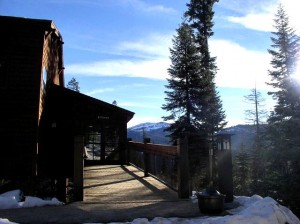
themselves to snow shoeing and cross-country skiing. By way of the Moro Rock Crescent Meadow Trail, fresh air folks can take the 1.5-mile hike, 3.0 miles round trip to, and inspire your desire for more backwoods adventure!
As we thanked Carolyn for a wonderful day of outdoor hiking and recreation, we prepared to whet OUR appetites for Sierra Alpine cuisine at the Wuksachi dining room.
On the special selection was a delicious Cedar-Planked Salmon. Dinner was not only fittingly prepared to our current surroundings, but delicious as well. For those not familiar with this process of cooking, the cedar plank is first soaked in water and as the salmon bakes upon the wood, absorbs the smokiness of the cedar. The skin lifted right off the salmon and every bite was tender. In accompaniment were carrots, steamed to perfection and a nice wine from Mendocino.
We ordered the Trout as well, while these fish are not caught locally in the various streams of the forest, they are none the less fresh; prepared with olives and seasonings that will leave you satisfied. If you desire to fish on your trip to the National park, there are opportunities to do so in the various streams and creeks.
January, 2011 will bring a new Chef to Wuksachi lodge. The Chef will be arriving from “Geneva on the Lake” in Ohio; bringing not only fresh ideas, but also sustainable and organic cuisine. His anticipated arrival will be a welcome addition to the already well established gourmet dining experience at Wuksachi.
Before retiring, there was one more snow shoeing trek to be explored. Carolyn informed us of a star-gazing opportunity behind our lodge in a near-by snow covered parking lot that was closed for the winter. What an excellent way to allow our dinner to settle in and take in the wonderment of the evening sky once again!
As we said our farewells to the pleasant folk in Wuksachi, we stopped by the lodge gift shop for some Christmas cards and last minute gifts. We knew lucky travelers would be visiting the lodge during their holiday season, as this is a popular destination point at this time of year. But don’t forget spring, summer, and fall seasons. There is no end to the glorious views year round.
And yes, farewell is certainly not good bye as we will be visiting Wuksachi in the summer of 2011. Not only to experience the latest cuisine, but also to take part in the summer program lead by Carolyn Pistilli. Bearpaw High Sierra Camp has been a popular experience for tent-cabin campers for 16 years! Countless trails and day hikes, ranging from three to 18 miles round-trip begin from this High Sierra Camp. This is also where you can get that fishing in if you were thinking of doing so. Local streams and lakes surround the camp. If you are interested in this delightful experience lead by Carolyn, make your reservations early, this fills up quickly.
Wuksachi tribe recently blessed the lodge in 2009, marking the 10-year anniversary. A master plan for the lodge calls for a build out to 414 rooms. Sounds like a plan to us, and may the Wuksachi bless the anticipated facilities in 2019! You can check out Wuksachi in greater detail; become a fan on Facebook, or visit to book a room on their website at:
http://www.visitsequoia.com/lodging.aspx
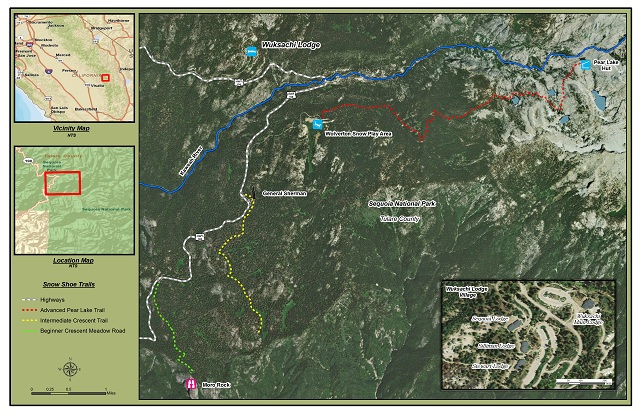
Sources:
http://www.nps.gov/archive/seki/snrm/gf/new/wuksachi.htm

